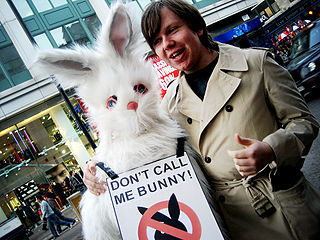
A paraphilia is an experience of recurring or intense sexual arousal to atypical objects, places, situations, fantasies, behaviors, or individuals. It has also been defined as a sexual interest in anything other than a legally consenting human partner. Paraphilias are contrasted with normophilic ("normal") sexual interests, though the definition of what makes a sexual interest normal or atypical remains controversial.
Hypersexuality is a term used for a presumed mental disorder that causes unwanted or excessive sexual arousal, causing people to engage in or think about sexual activity to a point of distress or impairment. It is controversial whether it should be included as a clinical diagnosis used by mental healthcare professionals. Nymphomania and satyriasis were terms previously used for the condition in women and men, respectively.

Pyromania is an impulse control disorder in which individuals repeatedly fail to resist impulses to deliberately start fires, to relieve some tension or for instant gratification. The term pyromania comes from the Greek word πῦρ. Pyromania is distinct from arson, the deliberate setting of fires for personal, monetary or political gain. Pyromaniacs start fires to release anxiety and tension, or for arousal. Other impulse disorders include kleptomania and intermittent explosive disorder.

Obsessive–compulsive personality disorder (OCPD) is a cluster C personality disorder marked by a spectrum of obsessions with rules, lists, schedules, and order, among other things. Symptoms are usually present by the time a person reaches adulthood, and are visible in a variety of situations. The cause of OCPD is thought to involve a combination of genetic and environmental factors, namely problems with attachment.
Pornography addiction is the scientifically controversial application of an addiction model to the use of pornography. Pornography may be part of compulsive behavior with negative consequences to one's physical, mental, social, or financial well-being. While the World Health Organization's ICD-11 (2022) has recognized compulsive sexual behaviour disorder (CSBD) as an "impulsive control disorder", CSBD is not an addiction, and the American Psychiatric Association's DSM-5 (2013) and the DSM-5-TR (2022) do not classify compulsive pornography consumption as a mental disorder or a behavioral addiction.

Kleptomania is the inability to resist the urge to steal items, usually for reasons other than personal use or financial gain. First described in 1816, kleptomania is classified in psychiatry as an impulse control disorder. Some of the main characteristics of the disorder suggest that kleptomania could be an obsessive-compulsive spectrum disorder, but also share similarities with addictive and mood disorders.

Reasons for opposition to pornography include religious objections and feminist concerns, as well as alleged harmful effects, such as pornography addiction. Pornography addiction is not a condition recognized by the DSM-5, or the ICD-11. Anti-pornography movements have allied disparate social activists in opposition to pornography, from social conservatives to harm reduction advocates. The definition of "pornography" varies between countries and movements, and many make distinctions between pornography, which they oppose, and erotica, which they consider acceptable. Sometimes opposition will deem certain forms of pornography more or less harmful, while others draw no such distinctions.
Impulse-control disorder (ICD) is a class of psychiatric disorders characterized by impulsivity – failure to resist a temptation, an urge, or an impulse; or having the inability to not speak on a thought. Many psychiatric disorders feature impulsivity, including substance-related disorders, behavioral addictions, attention deficit hyperactivity disorder, autism spectrum disorder, fetal alcohol spectrum disorders, antisocial personality disorder, borderline personality disorder, conduct disorder and some mood disorders.
Sexual addiction is a state characterized by compulsive participation or engagement in sexual activity, particularly sexual intercourse, despite negative consequences. The concept is contentious; neither of the two major mainstream medical categorization systems recognise sex addiction as a real medical condition, instead categorizing such behavior under labels such as compulsive sexual behavior.

Ego-dystonic sexual orientation is a highly controversial mental health diagnosis that was included in the American Psychiatric Association's Diagnostic and Statistical Manual of Mental Disorders (DSM) from 1980 to 1987 and in the World Health Organization's (WHO) International Classification of Diseases (ICD) from 1990 to 2019. Individuals could be diagnosed with ego-dystonic sexual orientation if their sexual orientation or attractions were at odds with their idealized self-image, causing anxiety and a desire to change their orientation or become more comfortable with it. It describes not innate sexual orientation itself, but a conflict between the sexual orientation a person wishes to have and their actual sexual orientation.

The Diagnostic and Statistical Manual of Mental Disorders, Fifth Edition (DSM-5), is the 2013 update to the Diagnostic and Statistical Manual of Mental Disorders, the taxonomic and diagnostic tool published by the American Psychiatric Association (APA). In 2022, a revised version (DSM-5-TR) was published. In the United States, the DSM serves as the principal authority for psychiatric diagnoses. Treatment recommendations, as well as payment by health care providers, are often determined by DSM classifications, so the appearance of a new version has practical importance. However, not all providers rely on the DSM-5 for planning treatment as the ICD's mental disorder diagnoses are used around the world and scientific studies often measure changes in symptom scale scores rather than changes in DSM-5 criteria to determine the real-world effects of mental health interventions. The DSM-5 is the only DSM to use an Arabic numeral instead of a Roman numeral in its title, as well as the only living document version of a DSM.

Pornography has been defined as any material in varying forms, including texts, video, photos or audio that is consumed for sexual satisfaction and arousal of an individual or partnership. The effects of pornography on individuals or their intimate relationships have been a subject of research.
Behavioral addiction, process addiction, or non-substance-related disorder is a form of addiction that involves a compulsion to engage in a rewarding non-substance-related behavior – sometimes called a natural reward – despite any negative consequences to the person's physical, mental, social or financial well-being. In the brain's reward system, a gene transcription factor known as ΔFosB has been identified as a necessary common factor involved in both behavioral and drug addictions, which are associated with the same set of neural adaptations.
Martin Paul Kafka is an American psychiatrist best known for his work on sex offenders, paraphilias and what he calls "paraphilia-related disorders" such as sex addiction and hypersexuality.
Primarily obsessional obsessive–compulsive disorder, also known as purely obsessional obsessive–compulsive disorder, is a lesser-known form or manifestation of OCD. It is not a diagnosis in the DSM-5. For people with primarily obsessional OCD, there are fewer observable compulsions, compared to those commonly seen with the typical form of OCD. While ritualizing and neutralizing behaviors do take place, they are mostly cognitive in nature, involving mental avoidance and excessive rumination. Primarily obsessional OCD takes the form of intrusive thoughts often of a distressing, sexual, or violent nature.
Personality disorders (PD) are a class of mental disorders characterized by enduring maladaptive patterns of behavior, cognition, and inner experience, exhibited across many contexts and deviating from those accepted by the individual's culture. These patterns develop early, are inflexible, and are associated with significant distress or disability. The definitions vary by source and remain a matter of controversy. Official criteria for diagnosing personality disorders are listed in the sixth chapter of the International Classification of Diseases (ICD) and in the American Psychiatric Association's Diagnostic and Statistical Manual of Mental Disorders (DSM).
The ICD-11 is the eleventh revision of the International Classification of Diseases (ICD). It replaces the ICD-10 as the global standard for recording health information and causes of death. The ICD is developed and annually updated by the World Health Organization (WHO). Development of the ICD-11 started in 2007 and spanned over a decade of work, involving over 300 specialists from 55 countries divided into 30 work groups, with an additional 10,000 proposals from people all over the world. Following an alpha version in May 2011 and a beta draft in May 2012, a stable version of the ICD-11 was released on 18 June 2018, and officially endorsed by all WHO members during the 72nd World Health Assembly on 25 May 2019.

Wendy Maltz is an American sex therapist, psychotherapist, author, educator, and clinical social worker. She is an expert on the sexual repercussions of sexual abuse, understanding women's sexual fantasies, treating pornography-related problems, and promoting healthy sexuality. She has taught at the University of Oregon and, up until her retirement in 2016 from providing counseling services, was co-director with her husband, Larry Maltz, of Maltz Counseling Associates therapy practice in Eugene, Oregon.
Sexual masochism disorder (SMD) is the condition of experiencing recurring and intense sexual arousal in response to enduring moderate or extreme pain, suffering, or humiliation. The Diagnostic and Statistical Manual (DSM-5) of the American Psychiatric Association indicates that a person may have a masochistic sexual interest but that the diagnosis of sexual masochism disorder would only apply to individuals who also report psychosocial difficulties because of it.








